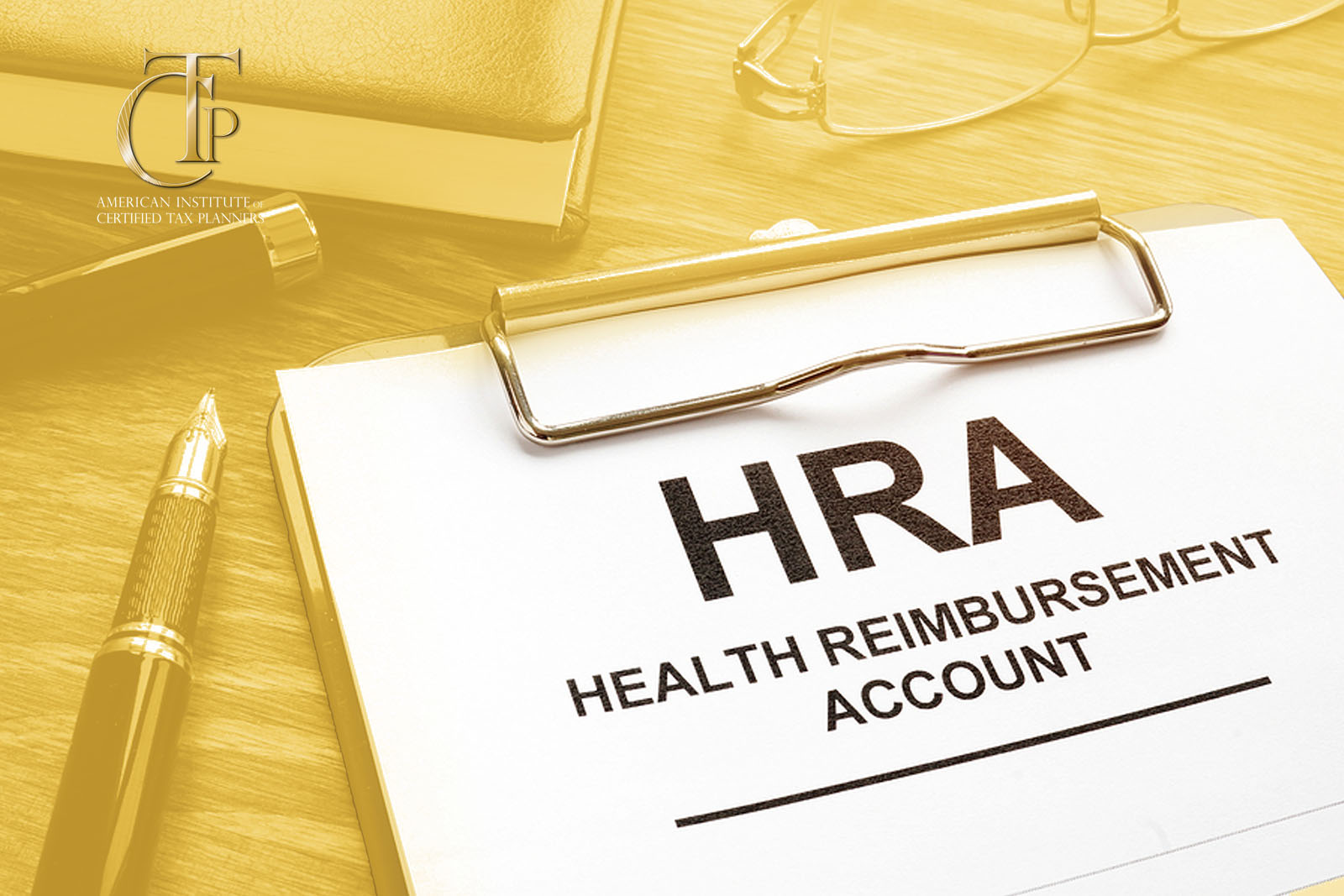Rising health care costs are becoming a financial obstacle for many retirees. The Fidelity Retiree Health Care Cost Estimate found that the average 65-year-old retiree will need about $165,000 to cover their total health care expenses. What if you could save for these necessary expenses and lower your tax liability at the same time? Many taxpayers may be eligible for savings vessels, such as health savings accounts (HSAs), flexible spending accounts (FSAs), and health reimbursement arrangements (HRAs). This article will cover the tax benefits that come with HRAs and the different types available.
How do HRAs work?
HRAs are funded through employer contributions. Since an HRA is not an account, the employee must pay for the expense first and then request a reimbursement by providing proof of your claims like a receipt. One exception is if your plan comes with a benefit card—then you can use this to pay for your medical expenses right away instead of waiting for the claims process to be completed. The funds received are tax-free for the employee.
HRAs can be used to reimburse you for qualifying medical expenses, such as health insurance premiums, deductibles, out-of-pocket maximum expenses, prescriptions, co-pays, vision, dental, chiropractor, and medical supplies. In the aftermath of the COVID-19 pandemic, the IRS also added over-the-counter medicine and personal protective equipment (PPE) as qualified expenses. Health sharing contributions also count as qualifying expenses. If you use direct primary care health plans or HSM-type health plans, these do not qualify for the standard health insurance deduction, but with an HRA, they are reimbursable items and can be taken as an employee benefit deduction.
If you are an employer interested in offering an HRA or an employee exploring your employer’s HRA offering for the first time, you will first want to orient yourself to the types of HRAs available. This includes the traditional HRA, defined contribution HRA, limited purpose HRA, QSEHRA, ICHRA, or Medicare HRA.
Traditional HRAs
The traditional HRA is a very underutilized tool, but it’s hardly new—this plan type was introduced back in 1954. To set up a traditional HRA, the business must have an employee who is not a self-employed owner. Most employers that implement a traditional HRA are single-owner businesses. C corporations are also common adopters of HRAs. With LLCs, this will depend on the tax treatment—if they are taxed as a sole proprietorship and just doing a profit and loss statement, for instance, that sole proprietor may need an employable spouse or relative to work for the business to set up an HRA.
Partnerships can also work as long as you have at least one employee drawing a W-2 wage. S corporations are the least ideal entity type for an HRA. For an S corporation, tax benefits are limited to FICA only because of the shareholder rules in play.
Defined Contribution HRA
The defined contribution plan is more popular with businesses that have a handful of employees or more, rather than the typical mom-and-pop shop. If a small business is looking for a cost-effective way to offer health benefits, this can be a great fit. The benefits and deductions here are the same as for a traditional HRA but with pre-set limits. If employers do not want to offer 100% premium reimbursement and a $15,000 out-of-pocket benefit like your traditional HRA, they can instead set a maximum for the benefits employees can use. For example, an employer could set a $500 premium stipend, allowing employees to request up to $500 in reimbursement once they provide proof of coverage.
One key restriction to note is that you must be paying for your own health insurance out-of-pocket to be eligible for the premium stipend. However, with the defined contribution HRA, everyone is eligible for out-of-pocket expense reimbursement or an annual benefit card regardless of where they have insurance. Annual benefit cards give employees direct access to whatever benefit the employer offers—whether that’s $1,000 or $2,000 benefit or any set limit. This can be a great fit for smaller employers to help cover basic expenses like eyeglasses and contact lenses for their employees.
Limited Purpose HRA
The limited purpose HRA is designed to be compatible with a health savings account. When you fund an HSA, that automatically makes any HRAs or FSAs become limited purpose. This means the HRA can only be used for premiums, vision, and dental. However, if you do not fund the health savings account in that plan year, the HRA can be used for anything.
If you do have both an HSA and an HRA, what you cannot do is fund the HSA, leave the money there, and then reimburse everything through the HRA. That would be considered double dipping. However, you can use both if you keep your HRA claims to those three items: vision, dental, and premiums only. This allows you to receive a tax benefit from both.
QSEHRA
The Qualified Small Employer Health Reimbursement Arrangement (QSEHRA) is similar to the defined contribution HRA, but to establish a QSEHRA, an employer must have 50 or fewer employees. Unlike a defined contribution HRA, employees must also have minimal essential coverage to utilize a QSEHRA. The QSEHRA benefit becomes taxable for any month they fail to maintain health coverage.
One disadvantage is that the limits are set by the IRS rather than the employer. For 2025, the maximum reimbursements available through a QSEHRA are $6,350 for self-only coverage and $12,800 for family coverage. Another limitation is that account holders are required to report QSEHRA benefits to the IRS. This can affect eligibility for subsidies or advanced premium tax credits if you are paying for your own marketplace health insurance.
ICHRA
Another popular option is the individual coverage health reimbursement arrangement (ICHRA). This is the only type of HRA that allows for employee contributions. The downside is that the ICHRA eliminates an employee’s ability to apply for marketplace coverage. An upside with the ICHRA is that it allows for classing rules. You can set different amounts for salaried employees versus hourly employees or management versus the rest of your staff. A likely good fit for the ICHRA is if your business has just a few employees that are all highly-compensated (say with salaries over $70,000) so that marketplace insurance is not really an option.
Medicare HRA
Lastly, the Medicare HRA is also increasing in popularity. Employers of any size can offer this type of plan. If an employer has group health insurance and a few of their employees become Medicare-eligible, this allows them to set up an HRA to reimburse those employees for their individual Medicare coverage. These employees can opt out of the group health plan and save money on premiums.
Summary
Health reimbursement arrangements provide tax benefits to both the employer and employees. Since most HRAs are employer-funded, employers receive a tax deduction for the expense, and employees are able to receive tax-free reimbursements for qualified medical expenses. If you run a small business with at least one non-owner employee, an HRA can be a great way to increase your benefit offerings without breaking the bank.
For help identifying tax-advantaged benefits for your business, reach out to a Certified Tax Planner today.





